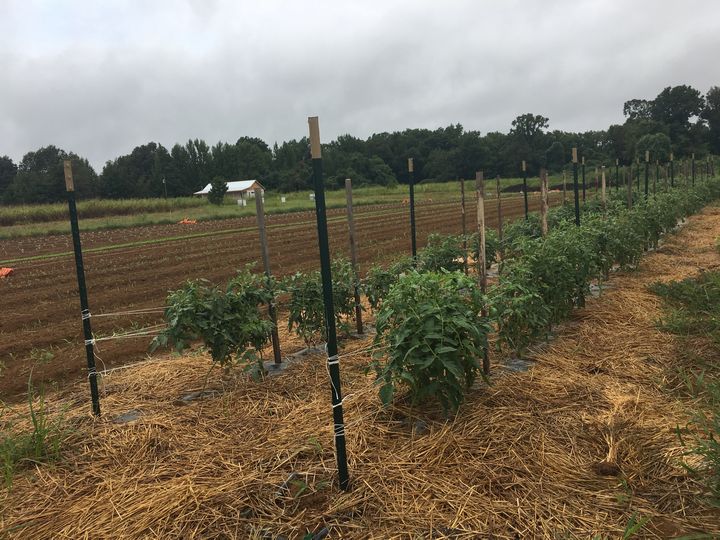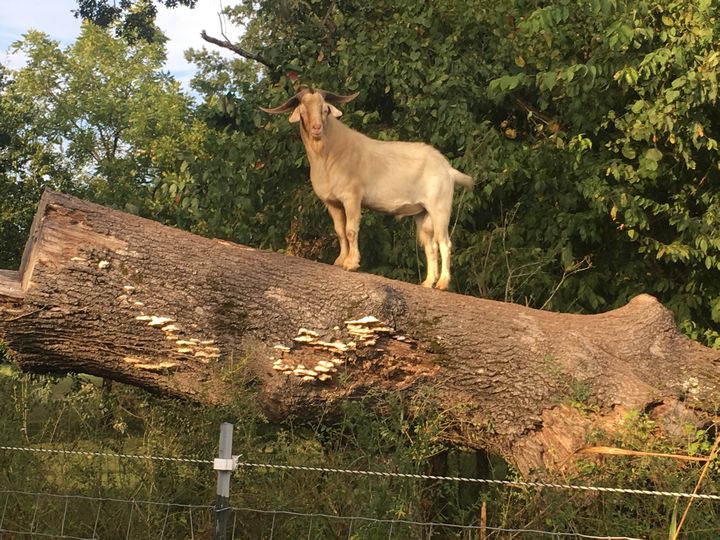I love August for its gorgeous sunsets and beautiful skies with towering cloud formations. Last night we were treated to some spectacular lightening. The month is flying by. Arugula and sweet potatoes will be ready to harvest soon. Tokyo Bekana (a salad green) and mustard should be ready soon as well, and kale not too far behind. There will be more butternut, okra and long beans in coming weeks. There will definitely be more peppers. We might squeeze another week out of the tomatoes, then we are in for a hiatus until October when the late tomatoes start producing.
 A couple weeks ago, we hit the organic matter jackpot. We got thirty or so truckloads of cotton burr delivered to the farm. This is the plant material that is left over after the cotton is ginned. The cotton gin less than a mile from our farm. Every year after ginning a giant pile of organic material just sits there, taunting us. For years we have searched for someone who could get it to our farm in quantity. Last year we finally managed to get some tonnage, and this year we got even more. Several large piles sit composting out in the field. We have already seen the difference in our soil from what we added last year.
A couple weeks ago, we hit the organic matter jackpot. We got thirty or so truckloads of cotton burr delivered to the farm. This is the plant material that is left over after the cotton is ginned. The cotton gin less than a mile from our farm. Every year after ginning a giant pile of organic material just sits there, taunting us. For years we have searched for someone who could get it to our farm in quantity. Last year we finally managed to get some tonnage, and this year we got even more. Several large piles sit composting out in the field. We have already seen the difference in our soil from what we added last year.
It is hard to overemphasize the importance of soil organic matter in sustainable farming. Building organic matter is our holy grail. Soils with high organic matter both hold water better when it is dry and hold more air and drain more efficiently when it is wet. They support diverse biological communities in the soil. Soils high in organic matter buffer pH and make plant nutrients more available. They make it easier for roots to penetrate. They are easier to work with the tractor. All this means healthier, more productive crops.
Our soils are low in organic matter. Crazy low. Laughably low. So-called “good” levels of organic matter are 5%-8%. We are sitting closer to 3% and some parts of the field have been tested at less than 2%. Ouch. This is due to a combination of our soil parent material (wind-blown sediment), climate, and historic land use. Although we regularly add organic material by growing cover crops, it is just not enough. Our soil would benefit greatly from an infusion of organic matter.
The soils we have been using longer just keep getting better and better. This is encouraging indeed, as a central goal of how we farm is to improve the health of the soil over time. We saw a big difference between our “new field” and the area we have been growing on since the beginning. Even though we cover cropped the new field for two years before attempting to grow crops on it, the soil has been more difficult to work with and the plants have not been as healthy. Like our other plots, it will only get better with time, as long as we keep soil health as a top priority.



